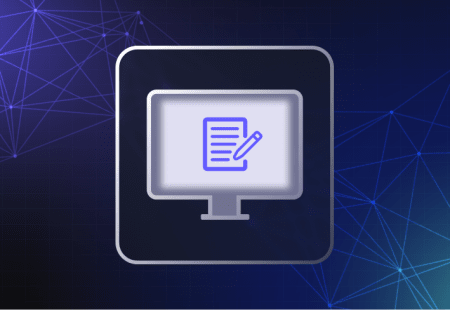✈️ What is Aviation Radio Telephony?
Aviation Radio Telephony (commonly called RT) is the voice communication system used by pilots and Air Traffic Controllers (ATC) to exchange vital information during flight. It’s a crucial part of flight safety, allowing for clear, standardized, and quick exchange of messages. All communication is conducted via radio signals, mostly in the VHF (Very High Frequency) band for civil aviation.
🎯 Purpose of Radio Telephony in Aviation
The purpose of RT is to:
Maintain safe separation between aircraft
Provide navigation instructions from ATC to pilots
Handle takeoff, landing, taxi, and enroute procedures
Manage emergencies or unusual situations
Maintain situational awareness among all parties in airspace
It’s essentially the language of the skies, allowing different parties to coordinate efficiently and avoid confusion.
📡 Frequencies Used in Aviation Radiotelephony (RT)
🔹 VHF (Very High Frequency)
Range: 118.000 – 136.975 MHz
Usage: Primary band for civil aviation communication
Feature: Short-range, line-of-sight communication
Example: Used for communication between aircraft and ATC (Air Traffic Control) near airports.
🔹 UHF (Ultra High Frequency)
Range: 225 – 400 MHz
Usage: Mainly for military aviation
Feature: Similar line-of-sight characteristics, used for secure military ops.
🔹 HF (High Frequency)
Range: 3 – 30 MHz
Usage: Long-range communication, especially over oceans or remote areas
Feature: Can bounce off the ionosphere, allowing communication beyond the horizon.
🚨 Standard ICAO Radio Phraseology
Mayday – Used during a distress situation involving grave and imminent danger, such as engine failure, fire, or risk to life. Declaring Mayday gives the aircraft immediate priority.
Pan-Pan – Signals an urgent situation that is not immediately life-threatening, such as a technical issue or medical concern. It’s one step below Mayday.
Roger – Means "message received and understood." It does not imply compliance, just acknowledgment.
Wilco – Short for "Will comply." It means the message has been received, understood, and the pilot will follow the instructions.
Say Again – Request to repeat the last transmission or part of it. Used when the message wasn't heard clearly.
Standby – Tells the other party to wait for further instructions. It doesn’t mean permission is granted.
Cleared for... – Used by ATC to authorize an action such as takeoff, landing, or taxiing. For example, “Cleared for takeoff Runway 09.”
Go Ahead – Indicates that the sender can proceed with their message. Common when ATC is ready to listen.
Negative – A formal way to say "no" or "not approved."
Affirm – A formal way to say "yes" or "affirmative."
🎧 Radio Telephony During Flight
RT is used at every phase of flight:
Before Departure: Pilots request clearance and taxi instructions from Clearance Delivery or Ground Control.
During Taxi: Ground Control gives instructions on how and where to move on the airport.
Takeoff & Climb: Tower Control clears the aircraft for takeoff. Then, responsibility is passed to Departure Control.
Cruise Phase: Area Control Centers (ACC) manage enroute traffic.
Approach & Landing: Approach Control and then Tower Control guide the aircraft safely to land.
After Landing: Ground Control guides the aircraft to the parking bay or terminal.
In each phase, proper radio telephony is essential to avoid misunderstandings that could lead to accidents.
🧠 Pilot & ATC Training
Both pilots and ATC officers go through extensive training in radio telephony. This includes:
Learning all ICAO standard phrases and protocols
Practicing in simulators with voice communication
Taking a Radio Telephony license exam
Completing an English Language Proficiency (ELP) Test, which assesses a pilot's ability to communicate in English clearly and effectively under pressure
ICAO requires pilots involved in international flights to have a minimum Level 4 proficiency in English.
🛑 Common Mistakes to Avoid in RT
Some common RT errors include:
Speaking too fast
Using slang or casual words instead of standard phrases
Not repeating back important instructions
Interrupting or overlapping another transmission
Not listening carefully before replying
These errors can cause confusion and compromise flight safety, so strict discipline in RT usage is essential.
🔤Phonetic Alphabet (ICAO Standard)
Used in aviation to spell out letters clearly over radio, especially for aircraft registrations, waypoints, and call signs.
A – Alpha
B – Bravo
C – Charlie
D – Delta
E – Echo
F – Foxtrot
G – Golf
H – Hotel
I – India
J – Juliett
K – Kilo
L – Lima
M – Mike
N – November
O – Oscar
P – Papa
Q – Quebec
R – Romeo
S – Sierra
T – Tango
U – Uniform
V – Victor
W – Whiskey
X – X-ray
Y – Yankee
Z – Zulu
🌐 Real-Life RT Exchange Example
Pilot: “Hyderabad Tower, Indigo 234, holding short runway 27, ready for departure.”
ATC: “Indigo 234, Hyderabad Tower, line up and wait for runway 27.”
Pilot: “Line up and wait for runway 27, Indigo 234.”
ATC (a few seconds later): “Indigo 234, wind 270 degrees 5 knots, cleared for takeoff runway 27.”
Pilot: “Cleared for takeoff runway 27, Indigo 234.”
Tanasha Tadvi
● Airline Operation Intern
● Asiatic International Corp
● tanasha.flyingcrews@gmail.com
● flyingcrews.tanasha@gmail.com
● https://www.flying-crews.com/
● Linkedin: linkedin.com/in/tanashatadvi
● Vcard: https://linko.page/svtxjbzyy3r8
● Facebook Page: https://www.facebook.com/profile.php?id=61576013069701
● Linktree:https://linktr.ee/tanasha_airlineoperations_
Products
Our Services
.jpeg)
Counselling For Airline Pilot Training
Airline Pilot Training By Capt Shekhar Gupta Author / Pilot Pilot's Career... Show more

Online Airline Career Counselling
Online Airline Career Counselling and Books orchestrated by Captain Shekhar Gupt... Show more
.jpeg)
Online Airline Career Counselling
Online Airline Career Counselling and Books orchestrated by Captain Shekhar Gupt... Show more


.jpeg)















.jpeg)





.jpeg)













.jpeg)



.jpeg)
.jpeg)



.jpeg)
.jpeg)


.jpeg)
.jpeg)




.jpeg)


.jpeg)
.jpeg)

Comments
Post a Comment